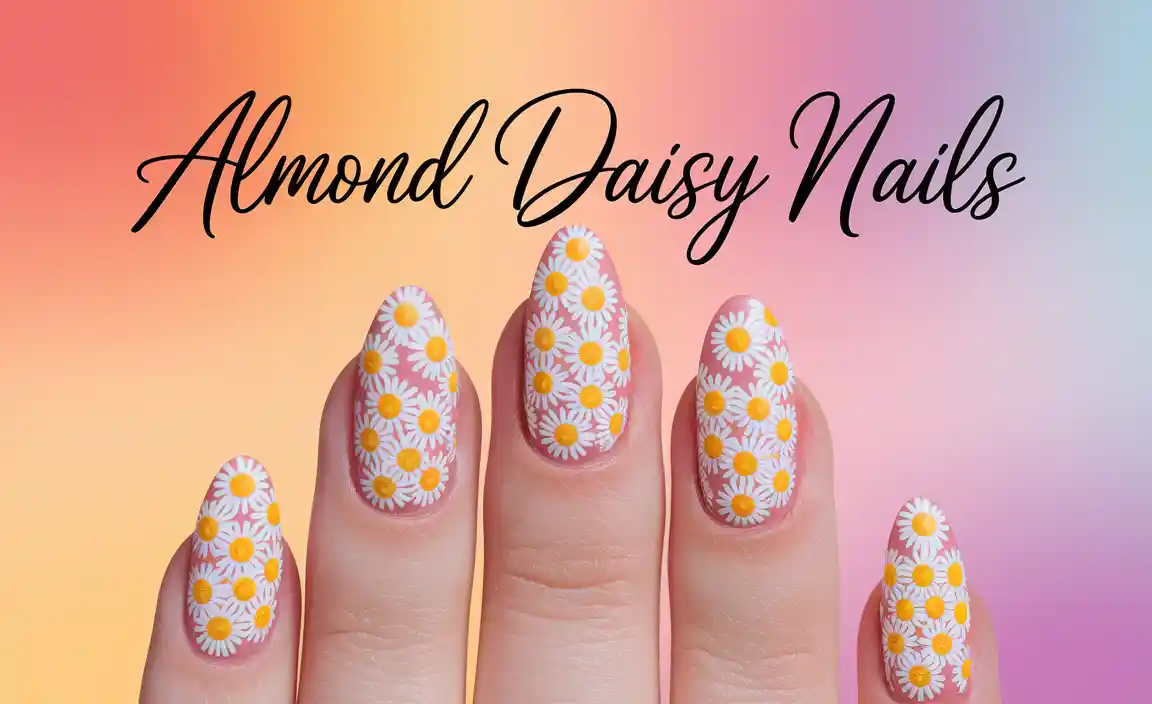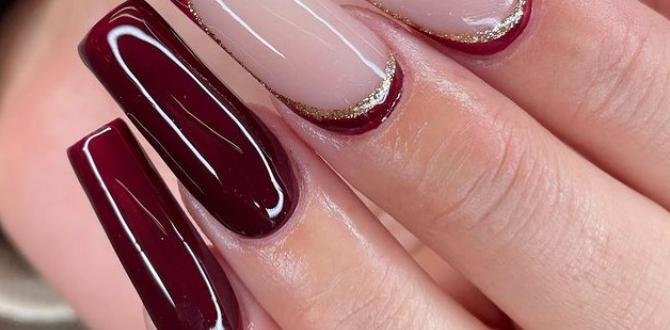Your guide to finding a top-notch professional nail art studio nearby is here! Discover how to choose the perfect salon for stunning, creative nail designs that express your unique style, ensuring a safe and satisfying experience for beautiful, lasting results.
Looking for that perfect manicure that wows? Finding a great professional nail art studio nearby can feel like a treasure hunt. Sometimes, you’ve tried a place, and the nails weren’t quite what you dreamed of, or maybe you’re new to town and starting from scratch. It’s easy to feel a little lost with so many options out there, and you want your nails to look their best! Don’t worry, we’ll guide you through finding a studio that’s just right for you. Get ready to discover your new favorite nail spot and unlock a world of fabulous nail art possibilities!
Why Choose a Professional Nail Art Studio?
While at-home manicures are fun and budget-friendly, a professional nail art studio offers a level of skill, creativity, and care that’s hard to replicate. It’s not just about pretty nails; it’s about artistry, precision, and a pampering experience.
The Artistry Factor
Professional nail artists are trained in intricate designs, color theory, shading, and various application techniques. They can transform your nails into tiny canvases, creating anything from minimalist elegance to elaborate masterpieces. They stay updated on the latest trends and can even help you conceptualize a unique design based on your style or a specific theme.
Expertise and Technique
Beyond just painting, professionals understand nail health. They know the right way to prepare your nails, apply enhancements like gel or acrylics without damage, and ensure a flawless, long-lasting finish. This expertise minimizes the risk of nail damage, infections, or poor product application.
Sanitation and Safety
A reputable studio prioritizes hygiene. This means sterile tools, clean workstations, and proper sanitation practices. This is crucial for preventing the spread of bacteria and ensuring your safety and well-being. The Centers for Disease Control and Prevention (CDC) emphasizes the importance of proper sanitation in nail salons to prevent infections.
Tools and Products
Professional studios invest in high-quality polishes, gels, acrylics, and specialized tools. This often means access to a wider range of colors, finishes, and brands, as well as professional-grade equipment that delivers superior results.
The Pampering Experience
Let’s be honest, a trip to the nail salon is a treat! It’s often a chance to relax, de-stress, and indulge in a bit of self-care. The ambiance, the gentle massage, and the focus on making you feel good all contribute to a positive experience.
Finding Your Dream Nail Art Studio Nearby: A Step-by-Step Guide
Ready to find that perfect nail art haven? Follow these steps to ensure you find a studio that meets your expectations and leaves you with gorgeous nails.
Step 1: Define Your Needs and Desires
Before you start searching, think about what you’re looking for. Are you after simple, classic manicures, or are you keen on intricate, custom nail art? Do you prefer gel, acrylics, or natural nail services? Knowing your preferences will help narrow down your search.
- Desired Services: Gel polish, dip powder, acrylics, nail extensions, nail art, natural nail care, manicures, pedicures.
- Style Preferences: Minimalist, trendy, bold, artistic, classic.
- Budget: Set a realistic budget for your appointments.
- Location Preference: How far are you willing to travel?
Step 2: Leverage Online Resources
The internet is your best friend when looking for services in your area. Start with broad searches and then drill down.
- Google Search: Type in “professional nail art studio nearby,” “best nail art salons [your city/neighborhood],” or “creative manicures [your zip code].”
- Social Media: Instagram and Pinterest are visual goldmines! Search hashtags like #[yourcity]nails, #[yourcity]nailart, #nailartistnearby. Many salons showcase their work here.
- Review Sites: Check platforms like Yelp, Google Reviews, and Facebook. Look for consistent positive feedback, especially regarding artistry, cleanliness, and customer service.
Step 3: Examine Portfolios and Online Presence
Once you have a shortlist, dive deeper into what each studio offers visually. A strong online presence is usually a good sign.
- Website/Social Media Gallery: Look at their photos. Does the nail art style match what you like? Are the designs clean, precise, and professionally executed?
- Technician Specialization: Some artists specialize in specific styles (e.g., 3D art, hand-painted designs, abstract patterns). If you have a particular look in mind, see if a specific artist at the studio excels in that area.
- Client Testimonials: Read what clients are saying. Pay attention to recurring comments about skill, cleanliness, friendliness, and the overall experience.
Step 4: Prioritize Cleanliness and Sanitation
This is non-negotiable! A clean salon means a safe salon.
- Visual Inspection: When you visit, look around. Are the stations clean? Are tools stored properly? Is there a visible sterilization process?
- Tool Sterilization: Professionals should use sterilized instruments for each client. This often involves an autoclave (a device that uses steam under pressure to kill microorganisms) or a disinfectant solution that meets industry standards. Reputable salons will be transparent about their sterilization methods.
- Disposable Items: Files, buffers, and orangewood sticks are often single-use and should be new for each client.
Step 5: Check for Licensing and Certification
Nail technicians and salons are often regulated by state or provincial boards. Ensure the technicians are licensed and that the salon adheres to health and safety regulations.
- Board Websites: You can often check licensing through your local cosmetology board’s website.
- Salon Display: Licenses are usually displayed prominently within the salon.
Step 6: Consider the Ambience and Customer Service
You want to feel comfortable and enjoy your time at the salon.
- First Impression: Does the salon feel welcoming? Is the atmosphere relaxing or overly chaotic?
- Staff Interaction: Are the staff friendly, professional, and attentive? Do they listen to your requests and offer helpful advice? A good consultation before the service is key.
Step 7: Book a Consultation or Initial Appointment
The best way to know for sure is to experience it yourself.
- Start Small: If you’re unsure, book a simple manicure or gel polish application first. This allows you to assess their skill level, cleanliness, and service before investing in a complex nail art design.
- Communicate: Be clear about what you want and ask questions. A good technician will guide you.
What to Expect During Your First Visit
Walking into a new nail art studio can be exciting! Here’s a general idea of what your first visit might entail, ensuring a smooth and positive experience.
The Welcome and Consultation
Upon arrival, you’ll likely be greeted by a receptionist or one of the technicians. They will confirm your appointment and may offer you a beverage. Before your service begins, you’ll have a consultation. This is your chance to discuss your desired design, colors, and any concerns you might have. Bring reference photos if you have them – this is incredibly helpful for the nail artist!
Nail Preparation
The technician will start by preparing your natural nails. This typically involves:
- Removing any old polish.
- Cleaning and sanitizing your hands and (if opting for a pedicure) feet.
- Gently pushing back or trimming cuticles.
- Shaping your nails to your preferred length and style.
- Depending on the service (e.g., gel or acrylic), they might lightly buff the nail surface to create an optimal base for application.
Nail Service Application
This is where the magic happens!
- For Gel/Dip/Acrylics: The chosen product will be applied in layers, with curing under a UV/LED lamp for gels or proper filing and shaping for acrylics/dip powder.
- For Natural Nail Polish: Base coat, color coats, and top coat will be applied, with drying time in between (or a quick-dry spray/fan).
- For Nail Art: This occurs after the base color is applied and cured (if applicable). The artist will use various tools like fine brushes, dotting tools, stencils, or even hand-painting techniques to create your design.
Finishing Touches
Once the design is complete, the technician will apply a top coat to seal and protect the art, adding shine and longevity. They might also apply cuticle oil to rehydrate the skin around the nails and buff the nails gently for a smooth finish. A final hand massage is often part of the experience.
Aftercare Advice
Your technician will provide tips on how to care for your new nails to maximize their lifespan and keep them looking beautiful. This might include advice on avoiding harsh chemicals, wearing gloves for household chores, and moisturizing cuticles.
Understanding Different Nail Art Techniques and Styles
The world of nail art is vast and exciting! Here’s a peek into some popular techniques and styles you might encounter at a professional studio.
Popular Nail Art Styles
Nail art can range from subtle accents to full-blown statements. Here are some common styles:
- French Manicure (Modern Twist): Beyond the classic white tip, think colored tips, glitter tips, or asymmetrical French extensions.
- Ombre/Gradient: A smooth blend of two or more colors across the nail.
- Geometric Designs: Clean lines, shapes, and patterns.
- Floral Designs: Delicate painted flowers or intricate botanical patterns.
- Abstract Art: Freeform designs, splatters, marbling, and unique brushstrokes.
- Minimalist Designs: Subtle dots, thin lines, or simple shapes on a nude or clear base.
- 3D Nail Art: Sculpted elements like flowers, bows, or gemstones attached to the nail.
- Character Art: Detailed portraits or representations of cartoon characters or figures.
Common Nail Art Techniques
Nail artists use a variety of tools and methods to achieve these looks:
| Technique | Description | Tools/Materials | Best For |
|---|---|---|---|
| Hand-Painting | Using fine brushes and polishes/gels to create detailed designs directly on the nail. | Ultra-fine detail brushes, gel polish, acrylic paint. | Floral designs, portraits, intricate patterns, fine lines. |
| Stamping | Using metal plates with etched designs, a stamper, and special polish to transfer images onto the nail. | Stamping plates, stamper, scraper, stamping polish. | Quick, repeatable, and intricate patterns; geometric designs. |
| Water Marbling | Dropping nail polish onto water to create swirling patterns, then dipping the nail into the color. | Water, various nail polishes, toothpicks. | Unique, abstract, marbled effects. |
| Encapsulation | Sealing elements like glitter, dried flowers, or small charms within a layer of acrylic or gel. | Acrylic powder, clear gel, desired elements. | Adding depth and durability to designs with embedded items. |
| Stones/Gems Application | Adhering rhinestones, crystals, or other embellishments to the nail. | Nail glue, top coat, tweezers, rhinestones/gems. | Adding sparkle and dimension, often for accent nails. |
| Gradient/Ombre | Blending colors using a sponge, brush, or airbrush. | Makeup sponges, fine brushes, airbrush machine. | Seamless color transitions. |
Nail Health and Maintenance Tips from the Pros
A beautiful nail art design is best showcased on healthy nails. Here’s how to keep your nails strong and beautiful between salon visits.
Daily Habits
- Moisturize: Apply cuticle oil and hand cream daily, especially after washing your hands. This keeps the skin around your nails soft and prevents dryness.
- Protect Your Hands: Wear gloves when doing household chores, gardening, or handling cleaning chemicals. These activities can strip moisture and damage your nails and polish.
- Avoid Using Nails as Tools: Resist the urge to use your nails to open cans, scrape labels, or pry things open. This can lead to chips, breaks, or lifting of enhancements.
When to Avoid Nail Art
Healthy nails are the best canvas. Consider skipping nail art or enhancements if:
- You have a nail infection or fungal issue.
- Your nails are severely brittle or damaged.
- You have allergies to common nail products (though salons often offer hypoallergenic options).
Always consult with a dermatologist or your nail technician if you have concerns about your nail health. Proper diagnosis is key, as some conditions, like fungal infections, require medical treatment and can be spread easily.
Between Salon Visits
- Regular Fills/Maintenance: For enhancements like acrylics or gel extensions, schedule regular fills (typically every 2-3 weeks) to maintain the shape and prevent lifting or breakage.
- Gentle Removal: Never peel or pick at gel polish or enhancements. This can strip layers of your natural nail. Always have them professionally removed or use proper at-home removal techniques.
- Keep Them Clean: Ensure your nails and the surrounding skin are clean to prevent bacteria buildup.
Choosing Your Ideal Professional Nail Art Studio: A Quick Checklist
To make your decision easier, here’s a handy checklist:
| Feature | Check | Notes |
|---|---|---|
| Online Reviews & Ratings | Look for high scores (4.5+ stars) and read recent comments. | |
| Portfolio Showcase | Do their nail art photos match your style? Is the work precise? | |
| Sanitation Practices | Do they seem meticulous about cleanliness? | |
| Licensed Technicians | Are licenses visible or confirmed? | |
| Range of Services | Do they offer the specific services you need (e.g., artistic designs, gel)? | |
| Customer Service | Are they friendly, communicative, and helpful? | |
| Location & Ambiance | Is it convenient and a pleasant place to be? |
FAQ: Your Professional Nail Art Studio Questions Answered
Q1: How much should I expect to pay for professional nail art?
A: The cost can vary significantly based on the complexity of the design, the salon’s location, the technician’s experience, and the type of service (e.g., gel vs. regular polish). Simple art might add $10-$20 to a manicure, while intricate, multi-nail designs can range from $30 to $100+ on top of the base service cost.
Q2: How long does a professional nail art appointment take?
A: A basic manicure might take 30-45 minutes. A gel polish application with simple art could be 45-75 minutes. For complex, custom nail art, expect 1.5 to 3+ hours, as each detail is meticulously crafted by hand.
Q3: Can I bring my own nail art design inspiration?
A: Absolutely! Bringing reference photos (from Instagram, Pinterest, magazines, etc.) is highly encouraged. It gives your nail artist a clear visual to work from. They can often replicate designs or adapt them to fit your natural nail shape and size.
Q4: What’s the difference between gel and acrylic nail art?
A: Gel polish




